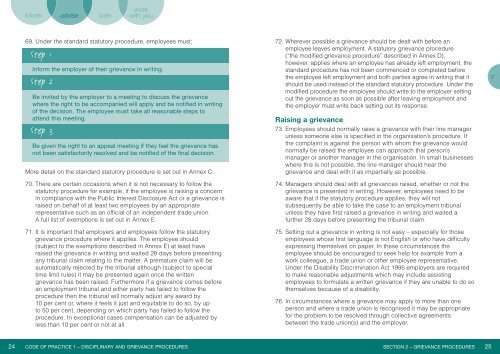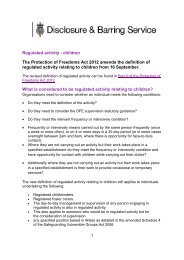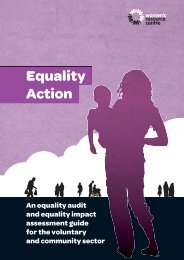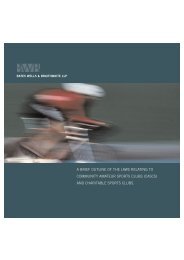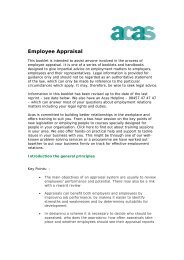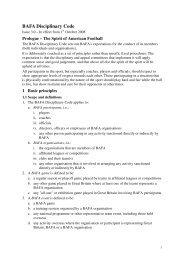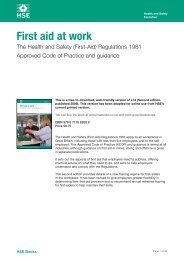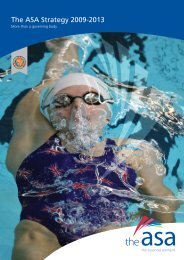Disciplinary & Grievance Procedures - Acas
Disciplinary & Grievance Procedures - Acas
Disciplinary & Grievance Procedures - Acas
Create successful ePaper yourself
Turn your PDF publications into a flip-book with our unique Google optimized e-Paper software.
69. Under the standard statutory procedure, employees must:Step 1Inform the employer of their grievance in writing.Step 2Be invited by the employer to a meeting to discuss the grievancewhere the right to be accompanied will apply and be notified in writingof the decision. The employee must take all reasonable steps toattend this meeting.Step 3Be given the right to an appeal meeting if they feel the grievance hasnot been satisfactorily resolved and be notified of the final decision.More detail on the standard statutory procedure is set out in Annex C.70. There are certain occasions when it is not necessary to follow thestatutory procedure for example, if the employee is raising a concernin compliance with the Public Interest Disclosure Act or a grievance israised on behalf of at least two employees by an appropriaterepresentative such as an official of an independent trade union.A full list of exemptions is set out in Annex E.71. It is important that employers and employees follow the statutorygrievance procedure where it applies. The employee should(subject to the exemptions described in Annex E) at least haveraised the grievance in writing and waited 28 days before presentingany tribunal claim relating to the matter. A premature claim will beautomatically rejected by the tribunal although (subject to specialtime limit rules) it may be presented again once the writtengrievance has been raised. Furthermore if a grievance comes beforean employment tribunal and either party has failed to follow theprocedure then the tribunal will normally adjust any award by10 per cent or, where it feels it just and equitable to do so, by upto 50 per cent, depending on which party has failed to follow theprocedure. In exceptional cases compensation can be adjusted byless than 10 per cent or not at all.72. Wherever possible a grievance should be dealt with before anemployee leaves employment. A statutory grievance procedure(“the modified grievance procedure” described in Annex D),however, applies where an employee has already left employment, thestandard procedure has not been commenced or completed beforethe employee left employment and both parties agree in writing that itshould be used instead of the standard statutory procedure. Under themodified procedure the employee should write to the employer settingout the grievance as soon as possible after leaving employment andthe employer must write back setting out its response.Raising a grievance73. Employees should normally raise a grievance with their line managerunless someone else is specified in the organisation’s procedure. Ifthe complaint is against the person with whom the grievance wouldnormally be raised the employee can approach that person’smanager or another manager in the organisation. In small businesseswhere this is not possible, the line manager should hear thegrievance and deal with it as impartially as possible.74. Managers should deal with all grievances raised, whether or not thegrievance is presented in writing. However, employees need to beaware that if the statutory procedure applies, they will notsubsequently be able to take the case to an employment tribunalunless they have first raised a grievance in writing and waited afurther 28 days before presenting the tribunal claim.75. Setting out a grievance in writing is not easy – especially for thoseemployees whose first language is not English or who have difficultyexpressing themselves on paper. In these circumstances theemployee should be encouraged to seek help for example from awork colleague, a trade union or other employee representative.Under the Disability Discrimination Act 1995 employers are requiredto make reasonable adjustments which may include assistingemployees to formulate a written grievance if they are unable to do sothemselves because of a disability.76. In circumstances where a grievance may apply to more than oneperson and where a trade union is recognised it may be appropriatefor the problem to be resolved through collective agreementsbetween the trade union(s) and the employer.224 CODE OF PRACTICE 1 – DISCIPLINARY AND GRIEVANCE PROCEDURES SECTION 2 – GRIEVANCE PROCEDURES 25


